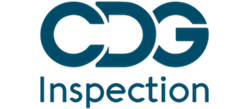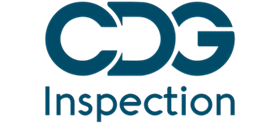Introduction:
In the field of pharmaceutical manufacturing, ensuring the safety, quality, and efficacy of medicinal products is paramount. To achieve this, regulatory authorities such as the European Medicines Agency (EMA) have established guidelines and standards to govern Good Manufacturing Practices (GMP). These guidelines emphasize the adoption of risk-based approaches to manufacturing, which provide a structured methodology for identifying, evaluating, and mitigating potential risks in the production process. EU GMP audits play a pivotal role in assessing the implementation of these risk-based approaches, ensuring that pharmaceutical manufacturers are adhering to the highest standards in product quality and patient safety.
EU GMP and Risk-Based Approaches:
The EU GMP framework serves as a comprehensive set of guidelines aimed at ensuring consistent manufacturing practices across the European Union. These guidelines outline requirements for various aspects of pharmaceutical manufacturing, including facility design, equipment qualification, process validation, quality control, and more. In recent years, there has been a growing emphasis on the integration of risk management principles into these practices.
Risk-based approaches involve the systematic identification, assessment, control, and review of risks to ensure the safety, efficacy, and quality of pharmaceutical products. These approaches recognize that not all risks are equal, and resources should be allocated based on the level of risk posed by specific factors or processes. By focusing efforts where they matter most, manufacturers can optimize their processes while maintaining high standards of quality.
Key Principles of Risk-Based Approaches:
- Risk Assessment: Manufacturers must identify and assess potential risks associated with various aspects of their operations. This could include risks related to raw materials, manufacturing processes, equipment, personnel, and more. A thorough risk assessment involves the identification of hazards, estimation of the likelihood and severity of potential consequences, and determination of the overall risk level.
- Risk Control: Once risks are identified and assessed, appropriate control measures are implemented to mitigate or eliminate them. These measures could involve process modifications, equipment upgrades, enhanced training for personnel, or changes in quality control procedures. The goal is to reduce the likelihood of adverse events and ensure consistent product quality.
- Risk Communication: Effective communication of risks and risk management strategies is vital. Stakeholders, including regulatory authorities, should be informed of the identified risks and the measures taken to control them. Transparency in risk communication fosters trust and collaboration between manufacturers and regulatory agencies.
- Risk Review and Monitoring: Risk-based approaches are not static; they require continuous review and monitoring. Manufacturers must periodically reassess risks to account for changes in processes, technology, regulations, and other factors. This iterative approach ensures that risk management strategies remain relevant and effective over time.
EU GMP Audits:
EU GMP audits serve as a critical tool for ensuring compliance with established manufacturing standards. These audits are conducted by regulatory authorities or authorized third-party organizations to evaluate a manufacturer’s adherence to GMP guidelines and their implementation of risk-based approaches. The goal is to verify that manufacturers are consistently producing pharmaceutical products that meet the required quality standards and that potential risks are being effectively managed.
Assessment of Risk-Based Approaches in EU GMP Audits:
- Documentation and Procedures: Auditors review the manufacturer’s documentation related to risk management, such as risk assessments, risk control strategies, and risk communication plans. These documents should demonstrate a structured and systematic approach to identifying and mitigating risks.
- Risk Identification and Assessment: Auditors assess whether the manufacturer has identified potential risks associated with different aspects of the manufacturing process. They evaluate the robustness of the risk assessment methodology used, including the accuracy of hazard identification, likelihood estimation, and severity assessment.
- Risk Control Measures: The effectiveness of risk control measures is examined. Auditors assess whether the implemented strategies adequately address identified risks and whether these measures are appropriately documented and validated.
- Change Management: Changes in manufacturing processes, equipment, or other factors can introduce new risks or modify existing ones. Auditors evaluate how manufacturers manage these changes through a risk-based approach, ensuring that appropriate assessments and controls are in place.
- Training and Competency: Personnel involved in the manufacturing process should be trained to understand and apply risk-based approaches. Auditors assess the adequacy of training programs and the level of competency among personnel in identifying and addressing risks.
- Monitoring and Continuous Improvement: Auditors review whether manufacturers have established mechanisms for ongoing risk monitoring and review. This includes evaluating how manufacturers respond to changes in risk profiles and whether they implement corrective and preventive actions as needed.
- Risk Communication: Effective communication of risks to relevant stakeholders, including regulatory authorities, is essential. Auditors assess whether manufacturers transparently communicate risk-related information and ensure that stakeholders are informed about potential risks and their management.
- Compliance with GMP: Risk-based approaches are integrated into the broader context of GMP compliance. Auditors evaluate how well manufacturers align their risk management practices with overall GMP requirements and standards.
Conclusion:
In the dynamic landscape of pharmaceutical manufacturing, the adoption of risk-based approaches is crucial to ensuring the quality and safety of medicinal products. EU GMP audits play a pivotal role in assessing the implementation of these approaches, ensuring that manufacturers are not only compliant with regulatory standards but also actively managing risks to maintain product quality. By evaluating documentation, risk assessment methodologies, control measures, training, and communication strategies, auditors ensure that manufacturers are following best practices to identify, assess, and mitigate potential risks. As pharmaceutical technologies and processes continue to evolve, EU GMP audits will remain instrumental in fostering a culture of quality, safety, and continuous improvement within the industry.





